Vivek Sood's Blog, page 51
September 7, 2014
The Value of Loyalty?
Author: Vivek Sood
I would not have known who Ed Catmull was, except for a passage in Steve Jobs’ biography by Walter Isaacson. Ed was the head of Pixar who repositioned the company from making ultra-high end graphics designing PCs to a company making beautiful stories into animated films using computer graphics.
As the story goes, at one point in his career, Steve was out of Apple and focused on making Pixar succeed as a computer company, while Ed was trying to building Pixar’s film business in parallel. Disney saw the potential of this technology, and offered Ed a lucrative deal to come and work for them making such films. By all accounts Disney had more clout, and stronger resource platform to help Ed do the most important thing in his life – yet he stuck to Steve Jobs. As a result Pixar got the contract to make “Toy Story” and, Pixar’s outstanding success gave Steve his second come back into Apple. The rest is history.
Awed as I am by Jobs’ accomplishments in creating outstanding products using a judicious mix of internal and external resources, his ability to inspire this type of loyalty struck me as extra-ordinary. In today’s world of transient affiliations, it was even more extra-ordinary.
The value of loyalty is clear – it rebuilt Steve’s career, and built Ed’s career. If you look at most careers carefully, you will discover the value of loyalty built into them.
In my next blog, I will explore ‘How to Inspire Loyalty?’
Related articles
Gurbaksh Chahal: The Most Vital Decisions by Steve Jobs (linkedin.com)
Vivek Sood – is the world’s foremost authority on Global Supply Chains which are the commercial engines sitting deep within modern economies and driving them. He is a Chartered Financial Analyst (CFA), and has done courses from Harvard, MIT, and University of London. As the Managing Director of Global Supply Chain Group, he works as a consultant to CEOs and boards of directors of large global corporations, and helps them multiply profits by using the full power of global supply networks. He is also the author of “The 5-STAR Business Network”.
The post The Value of Loyalty? appeared first on Global Supply Chain Group.
If You Do Not Show Your Care to Your Customers, Why Would They Care For You?
Author: Vivek Sood
This is how I explained the situation to a group of a senior executives of the company I was consulting to recently. The profitability was falling, and customers were abandoning the company (I cannot go into too much specifics of the case for obvious reasons of confidentiality). Let us say that each customer segment was unhappy.
High net worth customers were unhappy because they were not getting the premium service they expected. They would place or order and get a very mediocre service (from their point of view).
On the other hand, mass market was equally unhappy because they could get the same product for much lower price elsewhere.
Yet, the reality was different – high customer churn, accompanied by falling profits.
The main reason was that all these various customer segments were being served by a single supply chain that was a happy medium of all their requirements. No wonder, none of the customers felt that they were getting what they deserved.

The company was clearly not showing their customers that they cared for them, and as a result most customers simply voted with their feet.
So, what is the solution?
Clearly, a segmented supply chain is required to demonstrate to each customer segment that the company is going beyond the marketing and positioning statements, to actually serve them with care that evokes trust and loyalty.
This is not the only company that is in this situation. About 60% (estimate) companies I observe are not very far from this reality. If is easy to segment the market and come up with catchy marketing slogan for each segment that resonates with them. The hard work involves to follow up that marketing message with a tailored supply chain that delivers what your promised.
Related articles
SUPPLY CHAIN 3.0 IS REAL, AND HERE NOW (Part 2) (globalscgroup.com)
Good Intentions Must be Translated into Good Results – Using Good Methods(globalscgroup.com)
Make It Real, Keep It Real (globalscgroup.com)
Retail frontier shifts again, in response to online onslaught – more bargaining power to discount stores (globalscgroup.com)
- Vivek Sood is the world’s foremost authority on Global Supply Chains which are the commercial engines sitting deep within modern economies and driving them. He is a Chartered Financial Analyst (CFA), and has done courses from Harvard, MIT, and University of London. As the Managing Director of Global Supply Chain Group, he works as a consultant to CEOs and boards of directors of large global corporations, and helps them multiply profits by using the full power of global supply networks. He is also the author of “The 5-STAR Business Network”.
The post If You Do Not Show Your Care to Your Customers, Why Would They Care For You? appeared first on Global Supply Chain Group.
August 22, 2014
Caddies and Chartists – Why do Top Caddies Roll Thousands of Balls to Learn the Lay of the Land
I was watching the film “The Legend Of Bagger Vance” with my sons and I was struck with how important the caddies are for the competitors.
In case you have not seen the movie yet, below is a five minute YouTube clip to give you an idea:
As anyone who has watched a golf match knows, every shot counts. Smallest putts count as a full stroke, and can easily turn a potential multi-million dollar prize winner into a near miss. If you have been following the fortunes of the world’s top golfers, you might have noticed the difference that a change of caddy made to the careers of Adam Scott and Tiger Woods.
 Here, without going too much into the respective careers of these billion-dollar golfers (all the reasons for their change of fortunes), I would like to state one simple fact – that caddies play a significant role in golfers’ fortunes, probably much more than most people, including golfers themselves realize.
Here, without going too much into the respective careers of these billion-dollar golfers (all the reasons for their change of fortunes), I would like to state one simple fact – that caddies play a significant role in golfers’ fortunes, probably much more than most people, including golfers themselves realize.
Great caddies will go to great lengths to collect all the relevant information on distances, slopes and other relevant facts to enable the golfer to make the right decisions and execute them with confidence.
So, what is the difference between a great caddie, and a merely good caddie? They all walk the course and measure distances from all plausible spots to the pin. They all know the slope of the greens by heart, but the great caddies will sometimes roll hundreds of balls just to understand how the ball actually rolls on the green. That tactile feeling allows them to read the putts much better than other caddies.
Sure, it is hard work; and, in these days of modern technology, perhaps a bit redundant. However, their devotion to their craft makes them want to leave no stone unturned in collecting as much relevant information as possible to assist the golfer. Another YouTube clip from the same movie might make it more real for those who want to invest 3.5 minutes to see this:
Now, you may wonder why am I talking about caddies and golfer?
Because late last year, one of our consultants asked me why we wanted to manually plot over 1,400 locations and over 250,000 monthly movements on a map. His point was very valid. Supply chain software, Excel and other computer aids make it unnecessary to do so.
 In our company itself, we have already amassed supply chain models created over the last 15 years of our existence that can grab a dataset like this and spit out answers in minutes. It is far too easy to pump out Excel charts by the dozen without fully comprehending the significance of the story that the data is trying to tell. To fully understand this story, one must spend time listening to the data.
In our company itself, we have already amassed supply chain models created over the last 15 years of our existence that can grab a dataset like this and spit out answers in minutes. It is far too easy to pump out Excel charts by the dozen without fully comprehending the significance of the story that the data is trying to tell. To fully understand this story, one must spend time listening to the data.
For this reason, on nearly every project, we take care to manually plot the data at least till the entire project team has a very good appreciation of the operations being analyzed. Yes, it makes us work well into the night in many case. And, yes it is arduous work. But, this dedication to our craft begins with getting a tactile feel for the operation in its entirety – which is best achieved through such an exercise.

We want to make sure we have studied each and every avenue of change, tested every lever of transformation, and carefully selected only the most impactful few, so that we can assist the CEOs and executives who rely on us to guide them towards success.
After all, this attention to detail makes all the difference between a good strategy and a bad one; a successful business transformation saving our clients millions (or sometimes hundreds of millions) of dollars, and unsuccessful ones (that one reads about in the press) that do more damage than good.
Luckily, for the last 14 and half years, so far each one of our project has been a success, and we plan to keep that track record.
August 19, 2014
Good Intentions Must be Translated into Good Results – Using Good Methods
A LESSON FROM CORPORATE TEAM BUILDING
#485211717 / gettyimages.com
I was in a meeting with one of my clients who was one of the top 3 executives in a large company, and he was telling me his experience from a recent corporate retreat, where 24 of their top managers had gone in for a strategic planning session for three days in an offsite location.
In the retreat, about half the time was devoted to devising strategy using template. This was the exercise where a strategic planning firm which specialised in using the template approach for business strategy had come in and guided the process of creating an operational plan masqueraded as corporate strategy for the next 2 years.
Another half of the time in this corporate retreat was devoted to team building exercises where the top 40 managers in the company got to know each other’s goals, ambitions, strengths, weaknesses and how to work with each other. My friend was extremely happy with the team building exercises, because for the first time since he joined the company five months ago, they had a heart-to heart talk with each other where everyone was really fired up to work as a single team, to create a corporate strategy and implement it.
On the other hand, the strategy by template exercise did not impress him much. He felt they had missed some crucial inputs; the exercise should have been backed by a realistic data analysis; and that it should have challenged some of the common but flawed assumptions within the executive circle.
In fact, my friend showed me on his Kindle a paragraph he had highlighted from a highly acclaimed book – , Richard Rumelt’s Good Strategy/Bad Strategy: The difference and why it matters (pp. 58-59). Since then, I have bought this same book on Kindle, and found it to be of great value.
Not miscalculation, bad strategy is the active avoidance of the hard work of crafting a good strategy. One common reason for choosing avoidance is the pain or difficulty of choice. When leaders are unwilling or unable to make choices among competing values and parties, bad strategy is the consequence. A second pathway to bad strategy is the siren song of template-style strategy— filling in the blanks with vision, mission, values, and strategies. This path offers a one-size-fits-all substitute for the hard work of analysis and coordinated action. A third pathway to bad strategy is New Thought— the belief that all you need to succeed is a positive mental attitude. There are other pathways to bad strategy, but these three are the most common. Understanding how and why they are taken should help you guide your footsteps elsewhere.
Impressed with my friend’s enthusiasm for the team building exercise, I asked him: how often do they have to do something similar in order to retain the collaborative atmosphere within the company? He guessed that probably no more than once a year would be necessary to really bring everybody back into a team mode, where they were all enthusiastic participants.
When I caught up with the same executive after a few months, I asked how the team collaboration was going. And he was exasperated. So I asked him: “Has the enthusiasm waned?”
He said: “No, it hasn’t waned. However, while we are all very enthusiastic about working with each other and we all have extremely good intentions of collaborating and passing on the information to each other and not hoarding knowledge, we don’t quite seem to jell with each other.”
“We are spending a lot of money on getting culture right now. We have had culture surveys within the company, we have had numerous sessions on leadership and cultural adjustments as well as several team building exercises on Friday afternoons. Everyone is fired up, but somehow things don’t seem to jell.
“We all agree that we will put our people first. Our leadership very enthusiastically endorsed a benevolent culture within the company and our people are putting our customers first, there is no doubt about that either. Yet somehow all these good intentions, collaborative attitudes, leadership attributes and helpful cultural mores are not translating into profits. We don’t know what to do.”
I said: “Perhaps, these things take time to translate into profits or into concrete results.” And my friend seemed to think that there was probably a missing ingredient here.
#163389887 / gettyimages.com
He explained to me that good intentions by themselves would not translate into good results simply by trial and error. I concurred and we started talking about good methods.
The good-bad matrix
We came up with two by two metrics with intentions on the vertical axis and methods on the horizontal. And four squares which combined to form good intentions and good methods into good results which was the top right square. And bad intentions and bad methods leading to abysmal results which was the bottom left square.
The other two squares were average as elsewhere: good intentions met with bad methods or good methods met with bad intentions. Next, we started putting a variety of methods and intentions into these squares to see what really created the results and came up with a diagram as shown below:
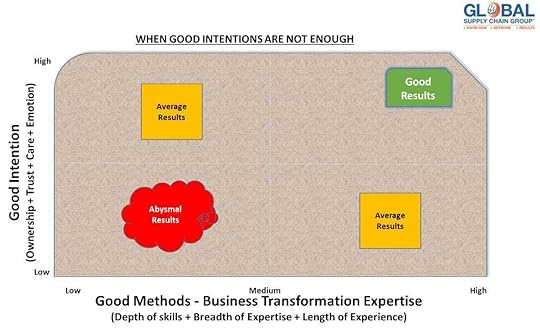
No doubt, the good intentions do not translate into good results automatically. It would be a hugely erroneous assumption that just because people want to collaborate and work with each other, and they have good leadership skills, they have good communication skills, they are willing to share information, they are willing to take on extra tasks, they are willing to help and smile at the customers; all these will automatically translate into good profits.
Similarly, good methods: no matter how good your IT systems are, how good your processes are, how good your supply chain is, how good your collaborative mechanisms are, if the intentions are bad, they are not going to translate into good results; because at some stage bad intentions will come and kill the effectiveness of the method itself.
From good intentions…
#163907116 / gettyimages.com
So what are some of the things that create good intentions? Obviously, the kind of team building exercise that my friend was describing was an extremely powerful tool to create good intentions within the company.
But that is not the only way good intentions can start from top management team. Every good leader instinctively knows how to get his team on the same page working their hardest, putting in their best effort, contributing their best possible effort. Many companies are now focusing quite deeply on the corporate culture. Corporate psychologists, organizational design specialists and even corporate mindfulness experts have all stepped in and done extensive work on coaching, mentoring and guiding the executives to align their intentions with the corporate strategy.
Yes, I know there is still a lot of hypocrisy and yes, there is still a lot of cynicism lying beneath some of these new age techniques, where a number of executives will go through the exercises with a half-cynical mind-set buried underneath a veneer of smiling face.
Yet, I believe just the motions of going through these exercises change the physiology which eventually does start changing the psychology as a result. However, I agree with my friend that despite all these good intentions, cultural adjustments, team building exercises, leadership trainings, corporate mindfulness exercises, corporate welfare and other means of fostering good intentions within the company, the results are still mixed.
…To good methods
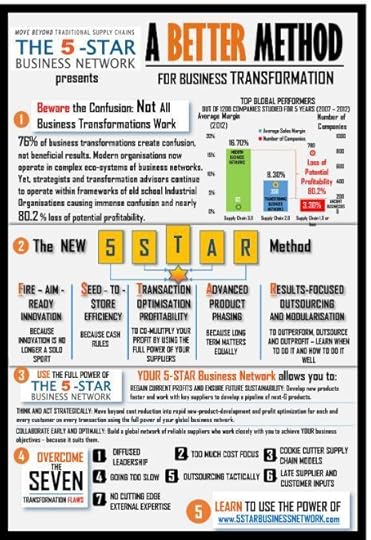 When we did our longitudinal study of more than 1,200 top corporations in the world over the period of six years (2007-2013), we noticed that among the top 50 corporations there were a number of surprises.
When we did our longitudinal study of more than 1,200 top corporations in the world over the period of six years (2007-2013), we noticed that among the top 50 corporations there were a number of surprises.
Several companies that were not known, either for their good intentions or for their attention to corporate culture, were performing extremely well simply because they married the good intentions with good methods.
So what are the good methods that we are talking about here? Obviously, good methods keep developing every few years. At one stage, not too long ago, it was a revelation in marketing when somebody thought: why do we have to market the same way every customer? Why don’t we segment the markets and customise the marketing message to each and every market segment?
That was in the late 70s. Since then, good methods have developed at a very rapid pace. In the 80s Michael Porter wrote his book on competitive advantage and created a stir with three simple strategies of cost leadership, of differentiation and niche strategies.
But since then companies have learnt to create a supply chain and then to create a differentiated supply chain for each one of the market segments. And then further on, to create a supply network or a business network in such a way that companies are now working with other companies to collaboratively create products faster at a more profitable rate, to meet the need of their customers.
I have no doubt that good methods will continue to evolve in future. If you want to read more about good methods, here are a few articles that you can browse at your leisure.
http://globalscgroup.com/how-to-defend-against-boycott-with-a-strong-business-network
http://globalscgroup.com/a-better-method-to-outsource-and-win
http://globalscgroup.com/how-supply-chain-3-0-can-lead-to-tangible-business-benefits-part-6-of-6
August 18, 2014
MAKE IT REAL, KEEP IT REAL
Value of trust in supply chain management
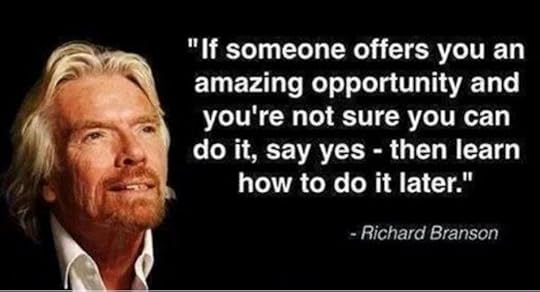 Recently an owner of a medium sized business (who was one of our well-wishers) showed me (and one of our new recruits in sales management department) the way they were using dummy websites to generate leads for their business. He also mentioned that nowadays this is a very common practice to create dummy websites, even dummy companies and fake addresses for the sheer ease of doing so while anticipating potential benefits. He wanted to encourage us to do the same thing. We listened to him and thanked him for his opinion.
Recently an owner of a medium sized business (who was one of our well-wishers) showed me (and one of our new recruits in sales management department) the way they were using dummy websites to generate leads for their business. He also mentioned that nowadays this is a very common practice to create dummy websites, even dummy companies and fake addresses for the sheer ease of doing so while anticipating potential benefits. He wanted to encourage us to do the same thing. We listened to him and thanked him for his opinion.
“Fake it till you make it” philosophy
He was firmly in the camp of people believing that you have to fake it till you make it. And I thank such people. Obviously there is a huge contingent of people who follow this philosophy. To justify themselves they often quote Richard Branson saying this:
I don’t know if this phrase was truly said by the man himself. However I would feel a little bit uneasy if pilots in their airlines adopted this mantra. It basically means that they accept the job as a pilot hoping to figure out how it works later, meanwhile they are going to fake it till they make it.
I know I have carried the example to an extreme, and pilots do need certification before anyone offers them a job as such. However, I am also aware that there are more subtle considerations such as aircraft types, routes and even airport characteristics where most pilots will not accept command of an aircraft till they know for sure they can do the job. Like them, I am firmly in the camp which says ‘make it real and keep it real.’
The risks are far too high; and the numerous opportunities to train and learn without exposing your passengers (or business network partners) to the unnecessary risks make it almost callous to do otherwise. Yet, many people persist.
Trust deficit and its side effects
This belief – fake it, till you make it – is usually based on the assumption that nobody will offer you a job if you’re perceived as not qualified for it. On the contrary, you are the best person to judge whether you are truly competent enough to take on a job. At the same time, with this comes the responsibility of choosing, whether to go ahead with the job offer; the responsibility of evaluating your own skills, experience and competence for this particular job.
Unfortunately, there are far too many people forsaking this type of responsibility that seems to only apply at a personal level. But it does not. That is also the reason why there is a lot of trust deficit in the business world. If you are faking it, your reader, your audience, your client, your customer will most likely know that you’re faking it. It is just a matter of time. Whether you are a motor mechanic who’s faking the knowledge of the type of motor that you’re repairing or you’re a heart surgeon or any job in between. Faking it is definitely not going to make you happier or more successful for the simple reason that your customer will always be uneasy with you. Furthermore, in your heart you will always know that you are faking it, which is not the best thing for your self-confidence and self-respect.
Supply chain management is not a unique field which requires a large amount of trust between people to collaborate. In fact, trust is a fundamental requirement for all collaboration, cooperation and joint activities between human beings. It becomes even more significant in supply chain management where it is both individual trust and institutional trust. Why is trust so important anyway?
There is an important reason why I mention it. As supply chains become more and more sophisticated, as they become more entangled and evolve into business networks, the need for trust within the supply chains becomes more and more intense.
Let’s take a specific example to make this generic statement more real. Suppose you are a soft drink manufacturer, and the suppliers of empty cans has a captive plant right next to your bottling plant, you have a good chance of hearing about their business ups and downs and know well in time about events that might affect your supply.
Now just substitute this captive supplier of packaging by a bunch of suppliers half way around the earth who might have significant cost advantage (because of manufacturing cost, for instance), and see how important it will be for you to keep open clear lines of communication in order to run your business smoothly and efficiently.
 Companies typically want to engage with supply chain partners who will be able to deliver on what they promise, barring a totally unanticipated event. If your business network partners are not fakes themselves, most likely they will not engage with you further when they find out that you’re faking it.
Companies typically want to engage with supply chain partners who will be able to deliver on what they promise, barring a totally unanticipated event. If your business network partners are not fakes themselves, most likely they will not engage with you further when they find out that you’re faking it.
Components of trust
Although trust in supply chain management is a very popular topic, it is evident that establishing trust within the business network can be very challenging. It takes time, patience and effort of each and every supply chain partner. It can be even more difficult to maintain trust over time.
As the concept of trust is rather abstract, it is also hard to measure. At the same time, despite all the difficulties and efforts you can be sure that developing trust with your suppliers and customers is worth the efforts.
So what is trust and what are the components of it? How to make sure that there is enough trust between you and your supply chain partners? Is it always worth the investment of your time and effort? Is there such thing as too much trust within the business network?
First of all, trust in supply chain management, as in any other cooperation between people, includes numerous factors. You should maintain good communication at all times between you and your partners. Communication also means honesty and openness. Fairness and loyalty can also be very helpful in establishing trust. Another integral part is the competence and your openness about whether you are qualified for this particular job or not. This kind of relationship requires goodwill and willingness not to exploit your partner’s vulnerabilities. This is even more important because of the confidential information which is shared between supply chain partners and with management consultants.
Levels of trust
My colleague, who was at this meeting, discussed the possibility of trying to create some websites to generate additional leads for our training business. And my answer was an unequivocal “no”. The reason was very simple.
I like to make it real – and keep it real.
I gave my colleague an example of the difference between level of trust required for a pharmacist, a general practitioner and an open-heart surgeon. When you go and buy a medicine from a pharmacy, you do need a certain amount of trust. You need to be confident that the pharmacist will indeed give you the formulation that the doctor has prescribed. You need to be sure that it is pure, unadulterated and sold at the market price.
 However the level of trust required from a general practitioner is much higher. Because you will have to literally remove your clothes in front of him. In this case you need the confidence that your general practitioner is able to examine you, to find out what was wrong. This trust further multiplies when we are talking about a heart surgeon. You need to be completely sure of your heart surgeon as you need to entrust him your own body, because he will be actually cutting you open and looking literally at your heart. Imagine a heart surgeon who lives with the philosophy mentioned earlier.
However the level of trust required from a general practitioner is much higher. Because you will have to literally remove your clothes in front of him. In this case you need the confidence that your general practitioner is able to examine you, to find out what was wrong. This trust further multiplies when we are talking about a heart surgeon. You need to be completely sure of your heart surgeon as you need to entrust him your own body, because he will be actually cutting you open and looking literally at your heart. Imagine a heart surgeon who lives with the philosophy mentioned earlier.
In the situation where people need to share confidential information, where the profitability of your business depends largely on the competence and honesty of someone else, it is critical to make efforts in order to develop trust. A low level of trust in this case may give a bit more independence and space at first but later on it will definitely result in lower productivity and profitability in supply chain.
Trust in management consulting
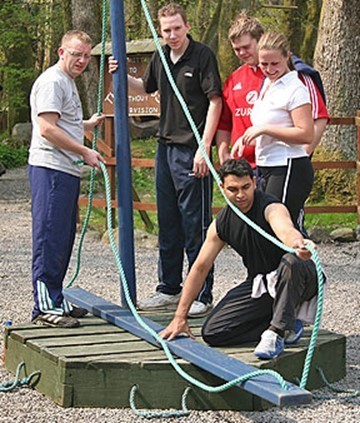 Management consultants by their nature need to establish a very firm bond of trust with their customers. The clients need to be able to entrust them with a lot of confidential data and information as well as their innermost strategies so that management consultants could work successfully and effectively. To be able to establish this kind of firm bond of trust you have to make sure that there is no possibility that your customer misunderstands any of your marketing messages. You should be unambiguous about your market position.
Management consultants by their nature need to establish a very firm bond of trust with their customers. The clients need to be able to entrust them with a lot of confidential data and information as well as their innermost strategies so that management consultants could work successfully and effectively. To be able to establish this kind of firm bond of trust you have to make sure that there is no possibility that your customer misunderstands any of your marketing messages. You should be unambiguous about your market position.
It takes us to the next point. It is always better to say clearly and honestly if the required skills or competences for a particular project are not within your company’s skillsets. Let me make it real with another example.
Very often when we formulate segmented supply chain strategies for our clients’ business, we need to understand the customer segmentation criteria. As part of that activity we need market research data, which is obviously outside the competency set of our business. I am very clear with my clients when such situations arise. I also say that I am in a position to recommend a few good market research firms, if necessary, but customers are welcome to choose any others that they want to use so long as the required segmentation data is available at the end of the exercise.
Sophisticated clients always appreciate a consulting company which is honest about where their competency starts and where it ends. On the other hand there are consulting firms who pretend that they are able to magically do everything. In most cases they end up doing nothing well enough, and in the long term they usually lose not only the trust of their clients, but also their own self-respect.
 Trust in the 5-STAR Business Network
Trust in the 5-STAR Business Network
Looking beyond management consulting, as mentioned before, trust is important for collaboration between supply chain partners. When you are working with your supply chain partners – suppliers and customers – in innovation, in order to create new products faster, in enhancing the profitability and reducing the cash-to-cash cycle, you know that relying on fakes will only come back and bite you at the worst possible time. (“Singing Ringing Tree Stitch” by Childzy – Own work. Licensed under Creative Commons Attribution 3.0 via Wikimedia Commons – http://commons.wikimedia.org/wiki/Fil...)
Typically deep understanding of customer segments is required to be able to configure a segmented supply chain so that the end-to-end business strategy is in coherence. This activity obviously requires an immense amount of trust running all the way through the entire business network. However, similar to the example comparing a pharmacist, a general practitioner and a heart surgeon, the required trust will always depend on the situation and on the level of collaboration that we need from each participant within the 5-STAR Business Network.
August 12, 2014
Helping to keep sport barrier-free
If there is one thing that could unite the spirits of mankind, amid all the chaos and turmoil in the world, it is sport. Whenever there is a large-scale sporting event, such as the World Cup or the Olympics, people gather, share and watch. Sport seems to be for everyone, or does it?
For less abled individuals, who also have a passion for sport, or just a desire to express themselves through participation in physical challenges, there seems to be limited opportunities. Fortunately, since movements such as the Special Olympics came around more than 4 decades ago, the lives of many people with intellectual disability have changed.
Following the noble cause, Australia also set up its Special Olympics organisation in 1976.
 This year, from 20-25 October 2014, “1,000 Aussie athletes with an intellectual disability will represent their state or territory at the Special Olympics Australia National Games in Melbourne, Victoria. With competition across 16 Olympic-type sports, the Games will be a huge celebration of ability as well as a qualifying event for next year’s Special Olympics World Summer Games in Los Angeles where athletes will have the opportunity to represent Australia on the world stage.”
This year, from 20-25 October 2014, “1,000 Aussie athletes with an intellectual disability will represent their state or territory at the Special Olympics Australia National Games in Melbourne, Victoria. With competition across 16 Olympic-type sports, the Games will be a huge celebration of ability as well as a qualifying event for next year’s Special Olympics World Summer Games in Los Angeles where athletes will have the opportunity to represent Australia on the world stage.”
As part of the fundraising initiative for the 2014 Special Olympics, Global Supply Chain Group is proud to sponsor the 54 Hole Golf Challenge. Scheduled to be held for the first time on 17 November 2014 at Riverside Oaks Golf Course in Sydney, this is “a unique event where players/companies have the opportunity to test their golf ability & stamina but more importantly support athletes with an intellectual disability.”
Apart from sponsorship, GSCG has also helped in additional fundraising and organising where possible.
“Just imagine the smile this could put on people’s faces. We sometimes take for granted how we get by every day without realising it could be a huge struggle for the intellectually disabled. I am personally a golf enthusiast and sponsoring the Golf Challenge for the Special Olympics is more than a double reward,” says Vivek Sood – CEO of GSCG.
In the larger scheme of things, GSCG will continue to pursue its corporate responsibility initiatives, by doing pro-bono work and writing a book on sustainable supply chains.
If you would like to help or donate to the Special Olympics’ Golf Challenge, please click here.
July 10, 2014
How to defend against boycott with a strong business network
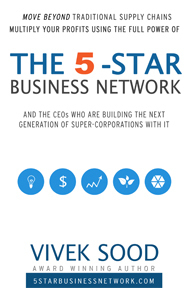 Imagine if you were a furniture seller, and suddenly your suppliers refused to supply furniture to you because they allege that you are selling at too low a price. And, when you went to another manufacturer, they refused too. In fact, it turns out that all manufacturers have decided to boycott your business because you are underselling every one of your competitors. What would you do?
Imagine if you were a furniture seller, and suddenly your suppliers refused to supply furniture to you because they allege that you are selling at too low a price. And, when you went to another manufacturer, they refused too. In fact, it turns out that all manufacturers have decided to boycott your business because you are underselling every one of your competitors. What would you do?
Would you raise the prices to “fit in” with the market?
Would you quietly start preparing for “transitioning out” of the furniture business?
Would you build your own furniture factory?
Would you appeal to the government that such an “organised boycott” was illegal?
Would you find “a way” to break the boycott and find a “boycott breaker” supplier?
As you have probably guessed, this is not a hypothetical situation. This is exactly the situation faced by Ingvar Kamprad of IKEA. The story, related by Malcolm Gladwell in his book ‘David and Goliath’, is illustrative of the power of business networks.
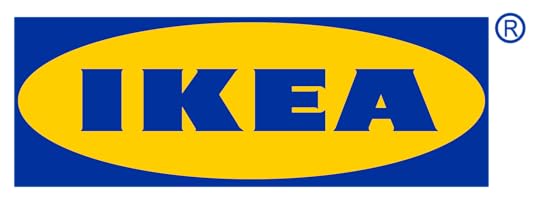
When I researched the story, there is obviously more to it than what is written in the book. This Forbes article gives the following background:
Kamprad started Ikea when he was just 16 (the name was officially registered in 1943) as a general mail-order firm. In 1952 he moved into mail-order furniture and the following year opened a showroom in lmhult. (The name is a combination of Kamprad’s own initials, plus the first letter of Elmtaryd, the family farm, and Agunnaryd.) He constantly tinkered with how the furniture was designed, to keep costs low.
In 1955 came a brilliant breakthrough: Trying to figure how to efficiently pack and ship a bulky, long-legged table, Gillis Lundgren, an early employee, later Ikea’s chief designer, hit upon the idea of taking the legs off and mailing them packed flat under the tabletop. Voil! Self-assembled furniture was born. It has been at the core of Ikea ever since.
In 1958 Kamprad began opening retail outlets, first in lmhult, then Norway (1963), Denmark (1969), Switzerland (1973) and Germany (1974, now Ikea’s largest market). Then came Canada (1976) and the Netherlands (1978). Later came Ikea’s second-and third-ranked markets, the U.K. (1987) and the U.S. (1985).
 The article further goes on to state:
The article further goes on to state:
In the late 1950s and early 1960s, Sweden’s National Association of Furniture Dealers boycotted Ikea, threatening the country’s furniture makers that if they sold to Kamprad, they could forget about selling to the association’s membership. That led Kamprad to emphasize both in-house designs and sourcing production outside Sweden. In the end, the boycott collapsed.
Malcolm Gladwell gives the details of how Kamprad built an international network of suppliers by going behind the iron curtain to Poland. While it was not an easy job, it was well worthwhile to start a process which built IKEA into a global powerhouse it is today. With 139,000 employees and global revenue of Euros 28 Billions, there is certainly more than meets the eyes.
It will take an article of several pages to trace the development of IKEA from its humble origins stated above, to its current lofty position – perhaps a good case study for another edition of my book “The 5-Star Business Network“. However, it is quite clear that IKEA and its business network co-developed in lock-step with each other, leaving all those members of boycotting Sweden’s National Association of Furniture Dealers far behind.
Author: Vivek Sood
Related articles
 Lessons learned from the times when IKEA was a startup
Lessons learned from the times when IKEA was a startup Dwelling: 70 Years of Ikea, as Told by – What Else? – Show Apartments
Dwelling: 70 Years of Ikea, as Told by – What Else? – Show Apartments Ikea founder Ingvar Kamprad steps down at 88
Ikea founder Ingvar Kamprad steps down at 88
July 9, 2014
Is there a lesson for business networks in Brazil’s 7-1 defeat to Germany?
Not too long ago I wrote a blog series on the transformation of Brazil’s soccer playing model from an individualistic style to a network-oriented style. In the early 90s, more than two decades since the last World Cup championship title and Brazil faced an interesting juxtaposition – continue with what led to past triumphs of Pelé and his peers, or move on with the new rules of the game.
The new rules were clear – minimise the individual wizardry of foot play, dribbling and nimble dexterous touches, and replace these with the power-play of networks of players moving in formations to conquer the opponents by outwitting them, by outsmarting them, and by outnetworking them using a better method.
In the in the same series, I contrasted Brazilian successful transformation with the failure of Indian hockey to transform itself. Under somewhat similar conditions, the Indian selectors, the coaches, the trainers and the players – all struggled to re-produce their stellar success of decades past. Therefore, the blame game has started and now all parties are blaming one another for the failure.

The worst loss in Brazil’s soccer history – Source: Google images
There were a number of useful lessons to be drawn from this successful transformation of the Brazilian soccer which I wrote about in that article series. However, the World Cup 2014 semi-final match between Germany and Brazil proved that their transformation was not as complete as I had thought. No matter how much the world wanted them to win, their traumatic 7-1 loss was a harsh reality still mourned over by many. This loss, to a formidable networked style play of German team, has at least three important lessons:
A network is only as strong as its weakest link: Brazil’s defence was always suspect, but without Thiago Silva, there was really no defence left. Everyone at the back, from the goalkeeper to the rest of the defence team was left wringing their hands in futile gestures as the German scoring machine outnetworked them on every front.
Risk-management and security of network is paramount: If your network relies on one or two stars – watch out. Analysts have been asking a lot of questions about post-Steve Jobs Apple for exactly the same reason. Protect your best network assets – but also try to make them redundant by making rest of your network assets of somewhat equal capability. What would have happened if Neymar and Thiago were playing in the match? More importantly, why was the rest of the team so heavily dependent on them?
When two networks compete – stronger one wins: No secrets here – except for the fact that the competition in business is also now between two business networks, and not between two individual companies. Those companies that manage to formulate and utilise stronger business networks will always outclass their less well-networked competitors.
Author: Vivek Sood
June 26, 2014
What Businesses Can Gain from the Transformation of Brazilian Soccer – Part 4/4
 This is the concluding entry in this series of blogs – where I reminisced about my experiences from learning to play hockey in India, and watching Brazilian soccer transformation over the past several decades.
This is the concluding entry in this series of blogs – where I reminisced about my experiences from learning to play hockey in India, and watching Brazilian soccer transformation over the past several decades.
In the first blog in this series I wrote about the Brazilian soccer teams’ transformation from an individualistic style of play to a network style game. In early 90s, more than two decades since the last World Cup championship title and Brazil faced an interesting juxtaposition – continue with what led to past success of PELE and his peers, or move on with the new rules of the game.
The new rules were clear – minimise the individual wizardry of foot play, dribbling and nimble dexterous touches, and replace these with the power-play of networks of players moving in formations to conquer the opponents by outwitting them, by outsmarting them, and by outnetworking them using a better method.
In the in the same series, I contrasted Brazilian success with transformation with the failure of Indian hockey to transform itself. Under somewhat similar conditions, the selectors, the coaches, the trainers and the players – all struggled to re-produce their stellar success of decades past. Unable to do so, the blame game started and all parties now blame all other parties for the failure.
Lessons from soccer (and hockey)
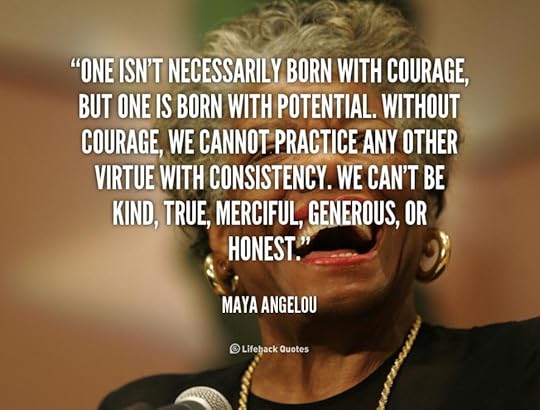 The parallel between these sport stories and business is profound: what happened with these two games, has also now happened in today’s business world. A company can no longer afford to play the game of business on its own, like a wizard. In fact I just wrote a blog on this topic entitled “A Company Is Known By the Company it Keeps.”
The parallel between these sport stories and business is profound: what happened with these two games, has also now happened in today’s business world. A company can no longer afford to play the game of business on its own, like a wizard. In fact I just wrote a blog on this topic entitled “A Company Is Known By the Company it Keeps.”
Today, a network of companies comes together, and pass the information and material to each other at various points, which creates the wizardry and allows them to outsmart their competitors in today’s market place. Every company does this – but only those which are most skilful at it win.
Only a handful of companies have fully realised the new rules of the game; and there are no more than 10 people on the planet who can help CEOs achieve this type of business model transformation. Why? Because business model transformation of this type is not easy. In fact it is much more difficult than changing the game plan in soccer and hockey in the example given above. To fully grasp the magnitude of the task you can read this article, and see if you agree that no more than 10 people on the planet can achieve this type of positive transformation.
So what are the lessons from Brazil’s success and India’s failure to transform the model of game?
Some of the lessons I drew are covered in the previous blog here. In brief, here are the headlines:
Understand the change in environment Commit to change
Change the stories and legends
To continue the series here are the rest of the pointers:
Separate the man from his method
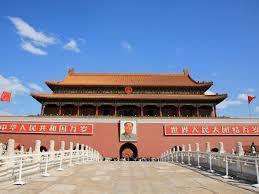 Following from the story of China above, the next message to deliver is: no matter how much a man was honoured for a method that worked well in the past, the point is to focus on what works now. Mao Zedong is undoubtedly a much revered figure in China. If you look at the country’s currency note, you will see him. Nonetheless, people also know only too well that his collectivism-driven policies no longer apply to nation’s growth patterns.
Following from the story of China above, the next message to deliver is: no matter how much a man was honoured for a method that worked well in the past, the point is to focus on what works now. Mao Zedong is undoubtedly a much revered figure in China. If you look at the country’s currency note, you will see him. Nonetheless, people also know only too well that his collectivism-driven policies no longer apply to nation’s growth patterns.
Similarly, Pelé is still widely regarded as one of the best players in the world of all time. His signature style, moves and soccer philosophy are still looked up to by generations of soccer fans around the globe. Yet, as much as Brazilian players want to emulate Pelé’s legacy, it has been proven that his method is not working anymore.
Likewise in business, a prominent figure may have laid an important foundation in the past, it will not be wise to stick to the person’s ideology when it no longer applies in today’s situation. Change can only start when people make a distinction between honouring a man and critically review his method for improvement.
Revisit the training
 I am one of those who used to play hockey as a junior and it pains me to see all that remains of Indian hockey is the “could-have-been” scenario. I have never learned to play hockey on Astroturf, I have never learned to play hockey as a formation within a team which moves in a very fast and agile manner, passing a ball to each other to outwit the competing team as a network of players.
I am one of those who used to play hockey as a junior and it pains me to see all that remains of Indian hockey is the “could-have-been” scenario. I have never learned to play hockey on Astroturf, I have never learned to play hockey as a formation within a team which moves in a very fast and agile manner, passing a ball to each other to outwit the competing team as a network of players.
If Indian hockey wants to make that change, they will have to start from the root: teaching the children who are just getting into the game using the new model, bringing in coaches from overseas who are experienced in applying this model. It is the only way they can catch up to whatever the state of the art in modern hockey is and truly reinstate it as a national sport. The same thing applies to soccer in many South American teams like Uruguay or Colombia, or even Mexico.
So if your business wishes to attempt a transformation, all those new employee orientation documents and on-boarding procedures need to change. For existing employees, periodical training also needs to be modified. In a way, teaching existing people new things is even harder than training new people.
Change the selection/promotion
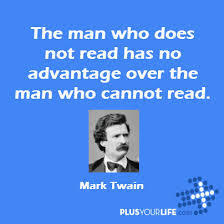 Closely related to the training of players is how they are selected in the first place. Brazilian coaches essentially needed to look for stronger players who could play as a team, even if that meant overlooking individuals with brilliant dribbling techniques. That does not mean individual sparks or talents would not be given the opportunity, but they may need to adapt if they want to be selected.
Closely related to the training of players is how they are selected in the first place. Brazilian coaches essentially needed to look for stronger players who could play as a team, even if that meant overlooking individuals with brilliant dribbling techniques. That does not mean individual sparks or talents would not be given the opportunity, but they may need to adapt if they want to be selected.
In the past, soccer players such as Pelé, rose to fame for their admirable individualistic and improvisational style. Nowadays, the most celebrated ones are probably those who know how to play in formations, spearhead a network of strategic players while still retaining some individual brilliance.
For a business transformation, it is vital to bring on board those who not only are experts in their own fields, but also, and more importantly, effective team players. Part of the issue in the corporate world nowadays is caused by the silo mentality. Thus, it makes no sense to take on employees who perpetuate this unhealthy schema.
The selection criteria may need to change to accommodate business transformation, whether for the present or future one. In particular, more focus should be given to one’s ability to coordinate with other departments, and other companies, in a pro-active manner. Perhaps, the awareness of how one’s work affects others helps, as well as the willingness to cooperate towards the same goal.
As an example, which is also mentioned at the beginning of my book “The 5-Star Business Network”, a CFO finds himself struggling to understand why he has been repeatedly overlooked for promotion. While he is a prime figure in the company who had worked his way up from a junior position in the finance department. No one could doubt his high calibre and depth of experience. Yet he just lacks that one quality the Board has been looking for – the ability to weave teams of internal and external experts into a cohesive whole. In other words, he still needs to work on how to get people to play in formations as in soccer, and understand the beauty of networks.
Create the right rewards and incentives
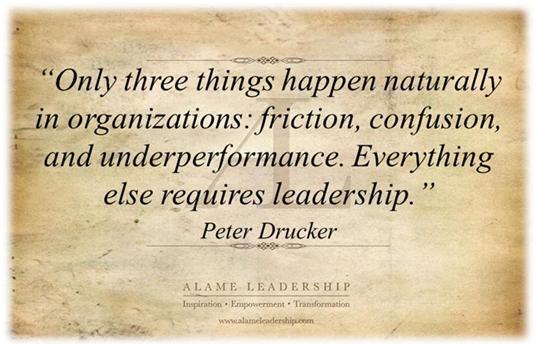 People are inherently motivated by rewards. In Skinner’s famous theories of operant conditioning, an association is made between a behaviour and a consequence for that behaviour, i.e. rewards or punishment. If we apply the concept here, to get the desired actions of change, there should be links to appropriate incentives.
People are inherently motivated by rewards. In Skinner’s famous theories of operant conditioning, an association is made between a behaviour and a consequence for that behaviour, i.e. rewards or punishment. If we apply the concept here, to get the desired actions of change, there should be links to appropriate incentives.
In soccer, for instance, instead of giving all the attention to individual brilliance, coaches, soccer associations and most of all, fans, should praise team efforts. Individuals who are good team players should also receive credit. Apart from verbal reinforcement, financial rewards or advancement opportunities act as good incentives.
Likewise, in business, a range of incentives for desired behaviour must be used. From a pat on the shoulder by the manager, to being named “Employee of the month/quarter/year”, getting a pay rise, being put on an important committee, and being promoted, you can be creative with choosing rewards for different levels of actions too.
Train, train, train in the new method
There will be many instances of conflict during a transformation – whether a conflict of interest, a conflict of generation or a conflict of perception. Change by its very nature is painful. Who can be sure that a brilliant soccer player who has been used to dribbling on his own will drop his ego and play as a team? Who can be sure that tomorrow Indian hockey players will not give up on the new Astroturf surface which requires so much more sweat and stamina to stay on?
There will be resistance, and calls to resist. But it is vital to resist such resistance and resolve conflicts as they appear. Every time you revert back to old way of functioning, all you are doing is prolonging the time it will take you to move on to the new one.
Proximate improvement
 When it is hard to swallow a big chunk of meat in one go, what do you do? Of course, the answer is to slice it into smaller pieces. If the transformation project seems too tall an order, and everyone seems to dread a disruption ahead, then proximate improvement should be applied.
When it is hard to swallow a big chunk of meat in one go, what do you do? Of course, the answer is to slice it into smaller pieces. If the transformation project seems too tall an order, and everyone seems to dread a disruption ahead, then proximate improvement should be applied.
The idea is to divide the journey towards transformation into small, achievable milestones. Once a proximate achievement is reached, then comes the next one until we have the desired outcome. For example, before being able to dominate the new hockey landscape, Indian hockey players need to firstly get used to running on Astroturf surfaces. This first milestone could be determined by achieving a certain amount of physical training to build stamina. Afterwards, they need to get used to controlling the ball with some more hours of practice. Then, the next proximate achievement is when players have learned how to play in formations on the new surface. The list goes on.
Applying it to your business, improvements can be achieved on a department-by-department basis, or process-by-process, service-by-service, depending on your company’s appetite for change.
Find the right people to help you
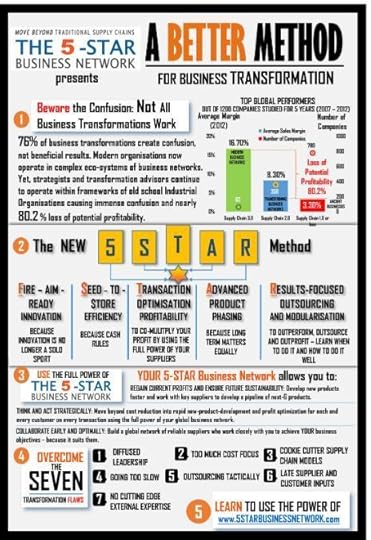 Even when you may have all the other ingredients, not having the right people to help you build that transformation bridge can leave you stuck with the old model. As long as the old model is the status quo, everybody in the system is inclined to walk within the boundaries. Disruptive thinking, therefore, tends to come from outside.
Even when you may have all the other ingredients, not having the right people to help you build that transformation bridge can leave you stuck with the old model. As long as the old model is the status quo, everybody in the system is inclined to walk within the boundaries. Disruptive thinking, therefore, tends to come from outside.
Experts who know and have experience of creating the new model are needed. These people also need to do the hard part, which is standing up, challenging the old way and guiding people to the new way.
Even harder than teaching a child something new, this involves making people un-learn something they have incorporated into their lives for so long. Hence, it is absolutely vital to correct people every time they fall back to the old habits. For example, every time a player starts dribbling a ball with hockey stick, he has to be pulled back and taught to play in a strategic formation. Undoubtedly, individual brilliance is still widely appreciated but without good team efforts, no single player can turn the tide. That is not to say there is no room for creativity in the new model.
As you can see, getting the right coach for a sport team or the people for a business transformation is paramount. There may not be more than 10 people on earth in today’s business world who truly understand the new business model and know how to apply it to yours. You have to get one of those 10 people and get them to work very closely with you.
Another important thing is to support them every time a conflict between the old and new model arises. These conflicts, whether of perceptions, of generations or of interests, may not be seen by insiders themselves. Therefore, someone from the outside looking in and then getting in to help resolve conflicts is a crucial element.
Just like when climbing Mount Everest, having a guide, or a Sherpa, increases your success rate by 1.5 times, the right corporate Sherpa can increase your success rate significantly. Would you risk getting lost, being hampered by heavy loads, having insufficient equipment or even falling off the edge, while there is a helping hand offered?
Now that we have all the ingredients, and steps, does that mean anyone who applies these will succeed. The obvious answer is no. Because, in the end, it still depends on how well you execute the transformation.
To get more – go to www.5starbusinessnetwork.com
Related articles
 What Businesses Can Gain from the Transformation of Brazilian Soccer – Part 3
What Businesses Can Gain from the Transformation of Brazilian Soccer – Part 3 Business Model Transformation: Lessons From Soccer And Hockey – Part 2
Business Model Transformation: Lessons From Soccer And Hockey – Part 2 What Business Executives Can Learn From The Story of Brazil’s Soccer Transformation
What Business Executives Can Learn From The Story of Brazil’s Soccer Transformation
June 23, 2014
What Businesses Can Gain from the Transformation of Brazilian Soccer – Part 3

In the first blog in this series I wrote about the Brazilian soccer teams’ transformation from an individualistic style of play to a network style game. In early 90s, more than two decades since the last World Cup championship title and Brazil faced an interesting juxtaposition – continue with what led to past success of PELE and his peers, or move on with the new rules of the game.
The new rules were clear – minimise the individual wizardry of foot play, dribbling and nimble dexterous touches, and replace these with the power-play of networks of players moving in formations to conquer the opponents by outwitting them, by outsmarting them, and by outnetworking them using a better method.
In the same series, I contrasted Brazilian success with transformation with the failure of Indian hockey to transform itself. Under somewhat similar conditions, the selectors, the coaches, the trainers and the players – all struggled to re-produce their stellar success of decades past. Unable to do so, the blame game started and all parties now blame all other parties for the failure.
Lessons from soccer (and hockey)
The parallel between these sport stories and business is profound: what happened with these two games, has also now happened in today’s business world. A company can no longer afford to play the game of business on its own, like a wizard. In fact I just wrote a blog on this topic entitled “A Company Is Known By the Company it Keeps.”
Today, a network of companies comes together, and pass the information and material to each other at various points, which creates the wizardry and allows them to outsmart their competitors in today’s market place. Every company does this – but only those which are most skilful at it win.
Only a handful of companies have fully realised the new rules of the game; and there are no more than 10 people on the planet who can help CEOs achieve this type of business model transformation. Why? Because business model transformation of this type is not easy. In fact it is much more difficult than changing the game plan in soccer and hockey in the example given above. To fully grasp the magnitude of the task you can read this article, and see if you agree that no more than 10 people on the planet can achieve this type of positive transformation.
So what are the lessons from Brazil’s success and India’s failure to transform the model of game?
Understand changes in the environment
The first lesson is that you need to pick up the currents of change on your horizon. Lots of companies do not maintain a strategic perspective to be able to detect the change of business model early enough, while the change is taking place. Sometimes they do not notice the change even after the business model has totally transformed.
For instance, India did not notice the full extent of change that had happened within the world of hockey. There are still teams in South America which have individual soccer wizards but simply fail to stand the onslaught of European winning machines who play like a network passing the ball to each other.
Moreover, businesses also need to notice the change well in time, to be able to do something positive about it. Lots of companies, people, and administrators notice the change when it is too late to do anything about it. Indian hockey is a prime example. By now it is well and truly registered in every Indian hockey player psyche why we have lost out on the global hockey front.
Commit to change
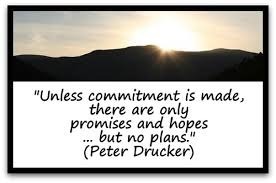 Indian hockey may from time to time, blame the lack of resources for their slide in international ranking. Putting the blame’s justifiability aside, the point remains that you must make sure you have all the necessary resources and commitment for the big move. Otherwise, not having enough resources, or thinking you do not need too much resources, will leave you in a state not much happier than the Indian hockey team today.
Indian hockey may from time to time, blame the lack of resources for their slide in international ranking. Putting the blame’s justifiability aside, the point remains that you must make sure you have all the necessary resources and commitment for the big move. Otherwise, not having enough resources, or thinking you do not need too much resources, will leave you in a state not much happier than the Indian hockey team today.
Apart from financial resources, you also need mental resources or the willpower to make that leap from the old mode of working to the new one. Coach Parreira more or less had to change people’s perception of success when he geared the Brazilian soccer team up for the 1994 World Cup. Memories of decades of street soccer and individualistic style needed to go. The same for India’s hockey story. Yet only Brazil succeeded. Why? Because they committed 100% to changing the status quo.
In other words, you need to stick to the transformation path till the end. There will be times when you will be tempted to revert, or take shortcuts because it is always easier to do things that come habitually. But it cannot be emphasized enough that you have to keep sticking to it till the new model becomes the way of doing things, till the new way of playing soccer is the only way you play soccer.
Update the stories or legends
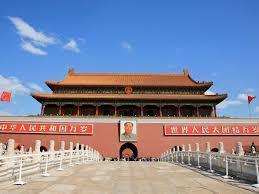 Legends and stories, of who you revere and why, are very powerful way of communicating what is important. People are naturally wired to retell the legends, and to try and live up to them. They become the norm, or what is considered acceptable by the majority. The norm is driven or constructed by extraordinary people with inspiring stories over time.
Legends and stories, of who you revere and why, are very powerful way of communicating what is important. People are naturally wired to retell the legends, and to try and live up to them. They become the norm, or what is considered acceptable by the majority. The norm is driven or constructed by extraordinary people with inspiring stories over time.
Therefore, to encourage a change in habitual thinking that facilitates transformation, the stories or legends need to be changed in people’s mind. A historical example comes to mind is China’s socio-economic transformation led by Deng Xiaoping in the 80s.
Back then, Deng’s task was to change the stories that had been so ingrained in people’s minds during the years of China’s previous leader – Mao Zedong. After proclaiming the founding of the People’s Republic of China (PRC) in 1949, Mao and other Communist leaders wanted to rebuild the country in the direction of the communism of which Marx had spoken, but at a faster rate and with a different flavor compared with the Soviet Union. Mao actively encouraged an abolition of differences between rich and poor, and divisions in labour.
The “Great Leap Forward” was a policy with which Mao hoped would inspire everyone to become an economic and managerial expert. Despite unsatisfactory outcomes, the policy succeeded in telling stories of collectivism and the importance of sharing resources. People’s communes were the next level of collective farms, where there was not only mass mobilisation of labour but also of living rituals.
Then came the Cultural Revolution as Mao attempted to re-assert his authority. At the time, Deng was still regarded by many as a “capitalist roader.” To make it more difficult, there were protests by students in Beijing who upheld Maoist idealisms, denouncing “revisionists and capitalist roaders” in favour of rights for the poor.
When Deng became the de facto leader of China’s Communist Party, he started changing the psyche of people by using a different set of vocabulary. “It matters not whether the cat is black or white, as long as it catches mice,” this is his famous saying which encapsulates Deng’s approach very well. What this essentially means is that practicality should come first and at that time, the language of revolution really diverted from that during Mao’s time.
Stories abounded about how glorious it was to get rich. From pouring resources into a common hub, both collective farmers and individual growers were inspired to make as much profit as they could and to invest in any kind of local business. In fact, one success story
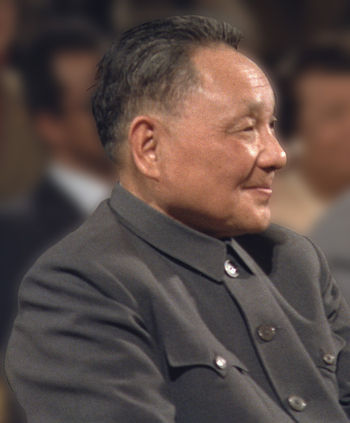
Deng Xiaoping (Photo credit: Wikipedia)
would inspire another one, and so on until China saw incomes increased significantly, stimulating industrial production along the way. Farmers were more or less their own masters and investors, they were able to purchase their own machinery and fertiliser. Meanwhile, in rural towns and in cities, “sidewalk entrepreneurs” started to appear. Everyone was pursuing their own wealth creation journey, regardless of what colour the collar was.
To sum up, what businesses nowadays can learn from this is: to propel change, create, or change the tales of success that show the benefits of your desired transformation.
—to be continued in a concluding blog
Related articles
 What Business Executives Can Learn From The Story of Brazil’s Soccer Transformation
What Business Executives Can Learn From The Story of Brazil’s Soccer Transformation Business Model Transformation: Lessons From Soccer And Hockey – Part 2
Business Model Transformation: Lessons From Soccer And Hockey – Part 2 The legacy of Brazil’s World Cup protests
The legacy of Brazil’s World Cup protests The Day I Met Pele’
The Day I Met Pele’ World Cup will be the biggest, loudest, wildest party – unless Brazil loses
World Cup will be the biggest, loudest, wildest party – unless Brazil loses The Brazilian Legend Continues
The Brazilian Legend Continues




